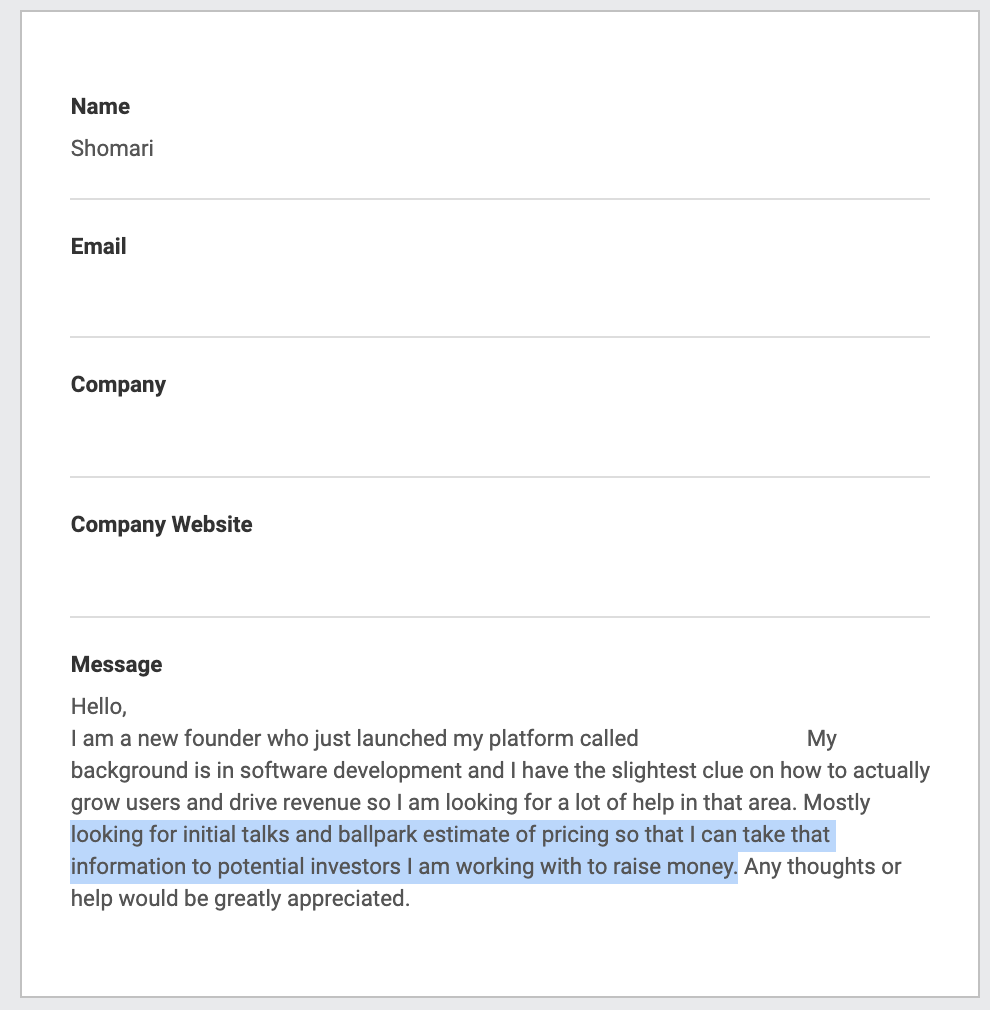How Much Will Growth Marketing Costs Be For My Startup?
Gearing up for a raise takes serious time and effort. Between conversations with investors, validating your idea, finding PMF, refining your pitch deck, and reviewing term sheets, it’s a tricky balancing act of prioritization.
And at the same time, while you work to secure funding—whether that’s pre-seed or Series A—you also need a plan to allocate the investment once you have it. Count “growth” among your key expenses.This encompasses both a growth model as well as a team that can help you prioritize high-impact campaigns to quickly drive key learnings, then invest in additional campaigns to scale up what works. This will help you to demonstrate that you can hit very specific, value-creating milestones and regale investors with drool-worthy potential.
Enter: Tuff! We’re a growth marketing agency that partners with startups and scales ups. And we often get this question:
“I’m looking for initial talks and ballpark estimate of pricing so that I can take that information to potential investors I am working with to raise money.”
Here’s an example of a founder who asked this exact thing in our contact form last week:
If you find yourself asking this question, too (whether you’ve recently secured funding or are at the beginning of the journey) here’s how we think about it at Tuff.
First, Reframe The Question
Another version of the question above is this: How can I allocate investors’ money wisely to increase startup performance? How much should go to growth marketing to help us find traction and scale?
With limited funds, you have to think strategically about what success looks like, what you are trying to learn, and how you’re going to make it to the next milestone. While revenue is often the most important long-term goal, right now, the biggest priority is to turn guesses into facts by gaining knowledge, data, and experience.
But you can’t test on every channel and you can’t afford to waste money on tactics that are sub-optimal. So, what do you do?
First, you want to identify a milestone. Milestones are different from your company’s general goals in that they are specific, measurable, and tangible. They are well-defined steps in a company’s growth journey. These are things like a new feature launched, acquisition metrics hit, a new important hire, or reaching first revenues.
Once you have your initial set of critical milestones, you want to create a growth model for your business. A solid model will also help you identify priorities to feed into your growth machine. From traffic to qualified leads to paying customers, you’ll be able to measure and optimize the full funnel to increase conversion rates and uncover pressure points that need extra attention.
This will help you spend your time on things that will have an actual impact on your growth. At the very least, it’ll help you eliminate things that don’t.
Then, Test Ideas Quickly (Learn)
When it comes to growth marketing, there are hundreds of different tactics, channels, and campaign ideas that you can test out. Additionally, there are a ton of different frameworks out there that seek to help you identify the right user acquisition channel to pursue, but ultimately this all comes down to knowing your industry and target market.
Instead of spending months and tens of thousands of dollars building a product you are not sure people need and will pay for though, it’s much more effective to build a growth model that enables you to learn where people go to find products like yours, how much they’re willing to pay for it, and, ultimately, whether or not they’ll pay enough (often enough) to keep you in business.
Here are three specific examples of ways we’ll tackle these questions:
- Create a landing page and drive paid traffic to it for two weeks. While you do this, set up Google Analytics to track onsite behavior, as well as hold interviews with at least 10 potential users. Identify what is resonating (and what’s not) and move forward.
- Test value props on Facebook with a $1,000 budget. Using Tuff’s value prop spreadsheet (#11), identify 2-3 distinct value props. Then, set up a campaign in Ads Manager to test these against each other. What ad copy has the best CTR and onsite performance? Learn from this and weave it into your messaging for landing page creation, website optimization, email copy, and more.
- Set up Google Search campaigns for non-branded traffic. With Google Ads, identify 10-15 high-intent keywords that you know your audience is searching for. Start with Google Search and run your campaigns for two weeks. Unlike Facebook or Landing Page development, these clicks are high-intent, meaning they are in the process of looking for a solution. If you have your value props, pricing, and offer right, this traffic should be highly engaged and willing to convert.
And Then, Invest in the Right Team & Growth Tactics
Once you have your milestone on paper, have experimented and tested a few initial growth ideas, and begun generating a small amount of traction, you’ll be in the perfect position to think about resourcing. Now, do you bring in a team, hire in-house, or continue to do it yourself? Or a combo of all three?
The Case for a Team / Agency
When you hire a growth marketing agency the major, overarching benefit is that it typically comes stacked with a full team that can get a holistic view of your business. This team will collaborate with you to identify the best course of action and delegate execution tasks to true channel experts. With an agency, you can often reallocate resources as you learn and move more quickly because the team has a long history of experience.
An agency is going to cost you anywhere from $7,500 – $20,000 at this stage depending on the pricing model. Here’s how we think about pricing at Tuff.
The Case for an In-House Hire
Finding a full-time hire is a great option for many companies. But they come with their own set of pros and cons when compared to a plug-in growth marketing team. The major benefit is the expertise and time they bring to the team. Pulling a full-time, smart marketing hustler that can squeeze the most out of a small budget and stay in lockstep with everything else you have going on can be a huge asset. The biggest downsides and risks are finding the right fit, investing the high cost and hoping that they can remain your go-to even if it becomes time to test tactics that fall outside of their wheelhouse. Ultimately, an in-house hire is right if you’re already confident in the channels that work for you and just need someone to help you refine and grow those 1-2 channels.
The Case for DIY
A third option is to continue experimenting with growth tactics on your own, as your company’s Head of Growth. We strongly recommend that Founders and CEOs play an active role in growth marketing in the early stages of the company to get a real understanding of the growth process and how to think about experimentation. The downside here is of course time. It’s not likely that you’re an expert at each channel and that you’ll have time to research the right strategy and then execute. What might take you 5 weeks to execute could take a team or in-house hire just 1.
Most common growth marketing expenses
It’s important to understand the different types of costs you’ll incur as you think about growth marketing. Here’s a shortlist of costs you’ll likely have as a startup when it comes to growth marketing:
- Ad Spend: $3,000 – $5,000 per channel
- Content Production: $0.35 per word at 4,000 words per month
- Design: $1,500/month
- Ad Creative
- Landing Page Design
- Website CRO: $1,500/month
- Developer Costs
- Marketing Tech Stack: $250/month
If you work with an agency, a lot of these costs will be included already in the retainer depending on their services so you’re really just thinking about agency cost + ad spend. For example, if you work with Tuff and are in our Lean Package, we’ll cover design, website CRO, and Content under our retainer if we’ve scoped those services. You’ll pay our $10,000/month management fee + ad spend per channel. We have clients spending as little as $5,000 a month and as high as $1M a month.
If you work with an in-house hire, the same logic applies but changes based on that in-house hire’s skillset. If they are really great at development and you’re using a friendly CMS, you won’t have to outsource that cost. Or if they are a great writer and can manage content production, you won’t have to outsource that cost. Instead of an agency retainer, you’ll pay a salary or contract hours, plus ad spend and any execution they need to outsource.
Last but not least, if you continue to DIY, you’ll likely need to outsource some, if not all of the execution. You save on a retainer or salary but lose on-time costs because you’ll be the one managing and running the strategy. For this, if you outsource design, content, and website development then you are looking at around $5,000 a month + ad spend.
Consider all your options before hiring an agency
The more we have these conversations, the more the internal team at Tuff comes back together to really try to get to the root of the question: “if you’re an early-stage startup, should you hire a growth marketing agency?” There are pros and cons to resourcing your team and we break down considerations in this blog post here.

Ellen is the founder at Tuff and one of the team’s core growth marketers. She is a versatile marketer with expertise in multiple channels – from ppc to seo to email to others – responsible for the experiments and testing. She is happiest when she’s on the ski hill or outside pointing her mountain bike downhill.






